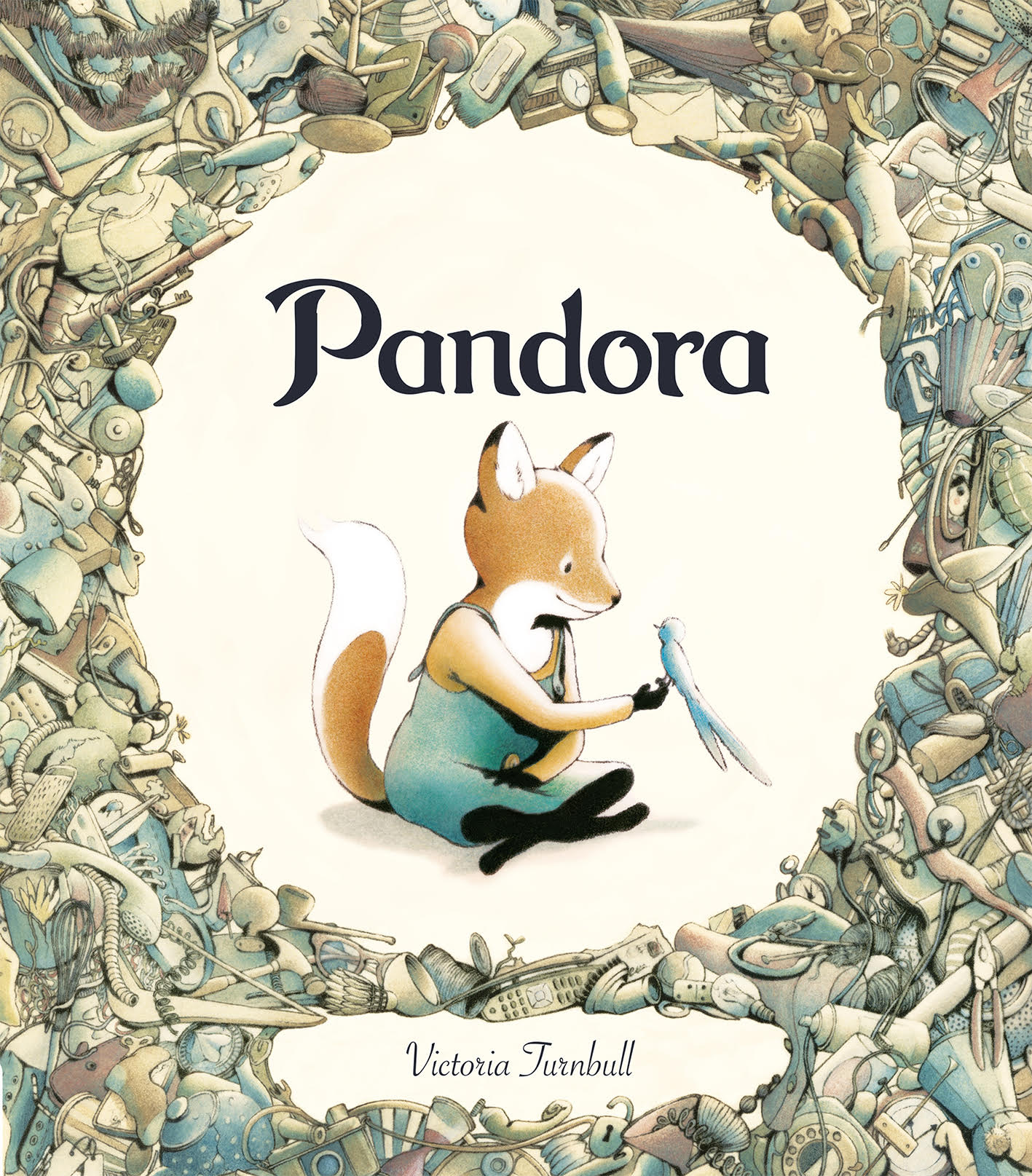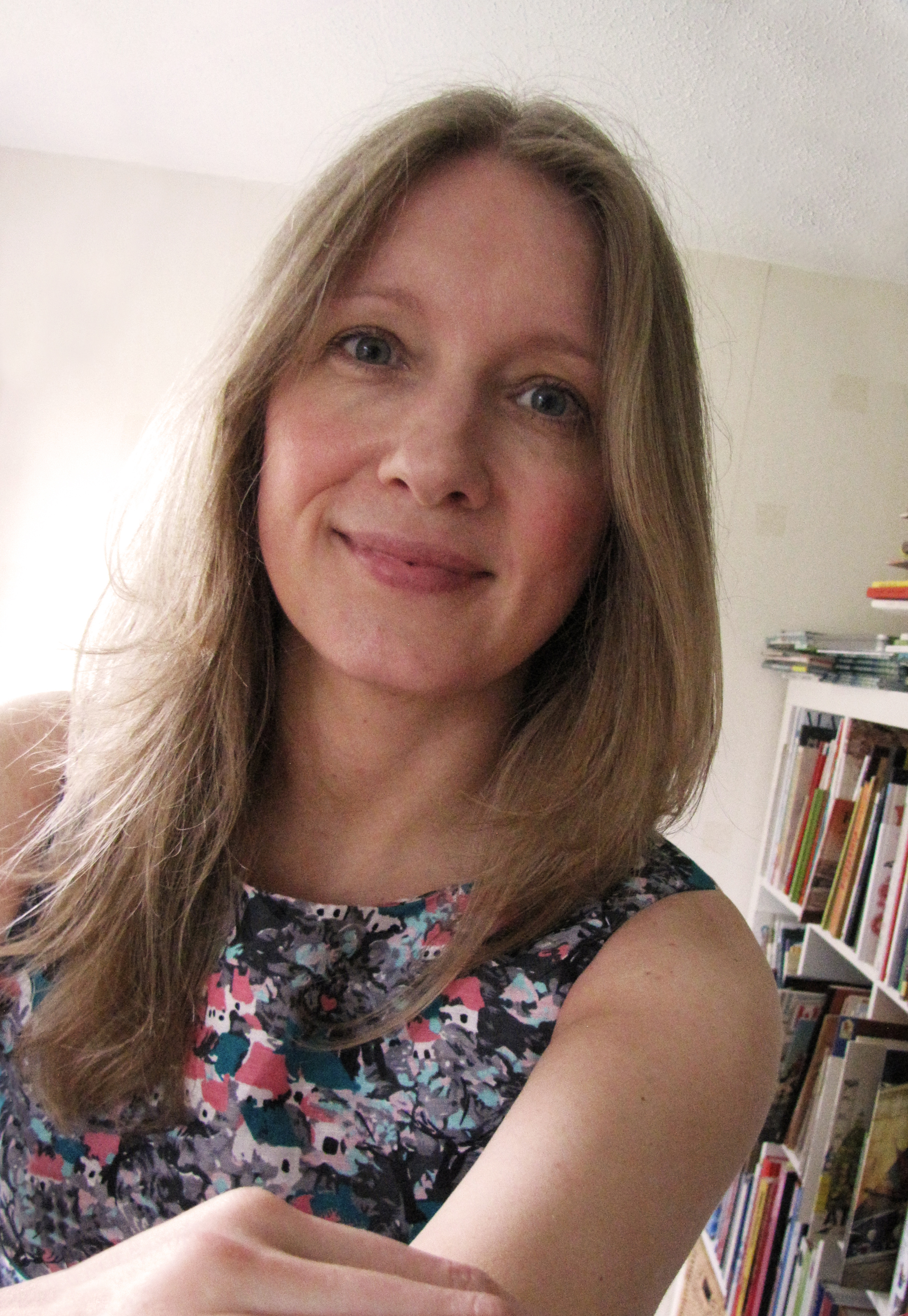Title of the work
Country of the First Edition
Country/countries of popularity
Original Language
First Edition Date
First Edition Details
Victoria Turnbull, Pandora. London: Frances Lincoln Children’s Books, 2016, ca 40 pp. (not numbered)
ISBN
Available Onllne
victurnbull.com (accessed: July 31, 2018)
Genre
Alternative histories (Fiction)
Didactic fiction
Picture books
Target Audience
Children (4-6 yo)
Cover

Courtesy of Victoria Turnbull.
Author of the Entry:
Anna Mik, University of Warsaw, anna.m.mik@gmail.com
Peer-reviewer of the Entry:
Elżbieta Olechowska, University of Warsaw, elzbieta.olechowska@gmail.com
Susan Deacy, University of Roehampton, s.deacy@roehampton.ac.uk

Courtesy of the Author.
Victoria Turnbull
, b. 1976
(Author, Illustrator)
Victoria Turnbull is a British author, mainly of picture books for children. She studied Children’s Book Illustration at the Cambridge School of Art.
She published following works:
- The Sea Tiger (2014)
- Kings of the Castle (2016)
- Pandora (2016)
Contact (accessed: May 30, 2018).
Bio prepared by Anna Mik, University of Warsaw, anna.m.mik@gmail.com
Questionnaire
1. When I was reading Pandora, I had a feeling that Your inspiration drawn from Greek Mythology was a subtle one, yet vividly present in the story. We encounter the world with no hope within and yet – it is still out there. What did draw You to write with Classical Antiquity in the background and what challenges did You face (if any) in adapting the Pandora’s myth?
I didn’t set out to adapt Pandora’s myth. I was writing a story about regeneration and hope, the myth seemed to fit this idea. It’s a Greek Myth that I recall well from my childhood and therefore came naturally to mind in connection with the story I was writing. So it was an influence rather than an adaptation.
2. In the "original" story Pandora was a woman that was a little bit too curious… Has Pandora from your story done something wrong? Is this her punishment?
No, the fox in my story has done nothing wrong. She has been forced to adjust to circumstances brought about by man. I think we, humankind, are all guilty of putting our own needs above the needs of the natural world.
3. The main character is a female AND an animal. Culturally both – women and animals, are still being excluded from the hegemonic discourse. Why did you choose a vixen? Was that a conscious choice?
Yes, it was a conscious decision. I wanted an intelligent and strong protagonist capable of existing in unthinkable conditions. I also considered the type of animal most likely to be able to survive such an environment and once I’d made the connection with the myth, Pandora seemed a fitting name.
4. The setting is a wasteland, with no life in it – no trees, grass, nature as we still know it. Was the contemporary world an inspiration to create this one?
Yes, I was considering the future of our world and the possible outcome if we continue along our current path – one where we have destroyed most of the natural world, including ourselves.
5. The second interpretation might be a little bit far-fetched but, please, just tell me what do you think about it. In the Greek Myth we read that Pandora was made from the same clay as her box. Thus, if we acknowledge the tradition of treating women as the source of all miseries, hope would be the only thing that is making women worth something – and that would be the ability to give birth to children. SO – if we read your story as a reinterpretation of the Greek story in such a manner, would the wasteland be an infertile womb of a contemporary woman that cannot have children? Hope that enters this world would be an anticipation of bringing back life to this world. What do you think about this kind of interpretation?
Certainly, I agree hope is an anticipation of bringing back life to this world and women are integral to that. I do not believe procreation is the only thing that gives women their worth, but I do think as a society that if often how women are regarded. So I find this interpretation very interesting.
6. Can we read the Pandora story as a metaphor of depression?
I was going through I difficult period of emotions whilst I was writing Pandora so my own experiences certainly played a part. I believe we are not always in control of everything but northing stays the same forever. We/the world are in a constant state of change. Therefore even when a situation seems impossible, there is always hope.
7. Are you planning any other myth-based rewritings?
Not at the moment but I think myths are an amazing source of inspiration. All my stories are a collection of ideas going around in my head and when connections form, a story begins to take shape.
8. Why do you think classical / ancient myths, history, and literature continue to resonate with young audiences?
I think because there is truth to them. You can tell the same story is many different ways, and every generation needs to try to understand the world they are living in.
9. Last but not least J I need some encyclopaedia-like information about you. I found a piece of it on your website, still, I need your birth date, place where you were born, and so on. Can you provide me with that?
I was born in York on 18th October 1976.
Prepared by Anna Mik, University of Warsaw, anna.m.mik@gmail.com
Translation
Dutch: Pandora [trans. not specified], Amsterdam: Clavis, 2016.
German: Pandora: Eine Geschichte von Zufall, Glück und dem Finden der Lebensfreude, trans. Annabel Lammers, Münster: Bohem Press, 2016.
Romanian: Pandora, trans. Iustina Croitoru. Bucharest: Humanitas, 2017.
Russian: Pandora, trans. S. Stepanov. St. Petersburg: Polyandria, 2017 (accessed: July 31, 2018).
Summary
Pandora is the story of a lonely she-fox living in complete isolation in the land of broken things. As she has no one to talk to or spend time with, she keeps busy gathering and fixing all the broken things that she finds outside (we see a broken bicycle, a tv set, furniture, etc.). For example, she tries to bring a teddy bear "back to life" by mending his ripped back. But even the cosiest home that Pandora managed to make for herself does not bring life to the land of broken things.
The story's turning point is when a bluebird falls from the sky and comes into Pandora's life. With its broken wings, it fits Pandora's world where everything is broken. She cares for the bird, makes it a nest and fixes its wing. Her guest can fly again. To her joy, it brings all kinds of seeds and plants from far-away lands. But then, one day, it does not come back. Pandora is alone, and as she misses the bluebird, she becomes depressed. However, life comes back to her world after some time – the nest made for the bird transforms into a beautiful bush – something that did not exist in this universe before. When she goes out, she notices that the whole land – previously covered by trash – is now full of trees and flowers, grown from the seeds brought by the bluebird. In this changing world, she again meets her bluebird friend. The land of broken things transformed into a world of living things.
Analysis
Pandora is a relatively recent book for children that may be interpreted as a metaphor for seeking hope even in the most terrifying and desperate circumstances. It was created for smaller children as a picture book, although its artistic and cultural values appeal to any reader. In her first three picture books, Turnbull deals with themes of loneliness, isolation, helplessness, and facing these misfortunes with optimism and hope, expressing the deepest needs of the contemporary child. In the case of Pandora, she does this by paraphrasing an important Greek myth of hope against all odds.
The meaning of the name Pandora – the all-gifted – indicates the direction of analysis. As we read in Hesiod's Works and Days (79–82):
"And the gods' herald gave her a voice, by the thunderer's design,
And called this woman the All-Gifted one, Pandora, because the divine
Olympians all gave her a gift and as a gift did give
Her as a woe to mortal men, who must earn their bread to live"
(trans. Catherine M. Schlegel and Henry Weinfield).
Pandora was the most beautiful woman ever created. However, as a gift to Epimetheus, Prometheus' brother, she did not serve humanity very well. According to an introduction to Hesiod's works: "Aphrodite gives her "painful longing"; that is, Hesiod has the goddess put the male response to women "inside" the woman (Schlegel, Weinfield, 2006: 6). She opened a jar [pithos], releasing all plagues, misery, troubles and sadness on the world, but also gave the people what we hold on to the most – hope. The jar is – just like Pandora – made of clay (Schlegel, Weinfield, 2006: 6). And further: "But hope stays inside, beneath the rim of the jar. Hope is the unborn child inside a woman's belly, but whose child will it be? Implicit is the male's fear about the outcome of his desire for this beautiful maiden. The woman is a woe, an endless uncertainty, and her body embodies male" (Schlegel, Weinfield, 2006: 6).
Just like the "original" Pandora, Turnbull's vixen has this "painful longing." Her world is empty, infertile (and we see that on the pictures that illustrate the story) – just like infertile and hopeless can describe a woman's womb, as done by Schlegel and Weinfield. With no life, no plants or animals in it, Turnbull's Pandora (or her "kingdom") can easily be related to the mythological one. Without a child, there is no hope, and a woman is practically useless – Hesiod says. Just like the land of broken things "ruled" by the vixen, that must be brought to life by a child reader.
Addenda
The only clear indication of reception of classical antiquity in this book is the title itself which is also the name of the main protagonist. The story lends itself to an interpretation in the context of Pandora's myth.


